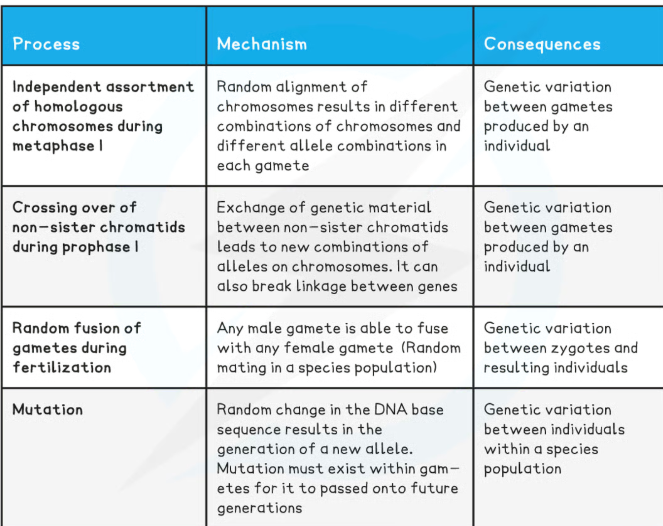Genetic variation
1/14
There's no tags or description
Looks like no tags are added yet.
Name | Mastery | Learn | Test | Matching | Spaced |
|---|
No study sessions yet.
15 Terms
Phenotype variation
The observable characteristics of an organism are its phenotype
What is phenotypic variation?
Phenotypic variation is the difference in phenotypes between organisms of the same species
This variation means that the individuals within a population of a species may show a wide range of variation in phenotype
Genetic factors affecting phenotypic variation:
In some cases, phenotypic variation is explained by genetic factors
For example, the four different blood groups observed in human populations are due to different individuals within the population having two of three possible alleles for the single ABO gene
Environmental factors affecting phenotypic variation
In other cases, phenotypic variation is explained by environmental factors
For example, clones of plants with exactly the same genetic information (DNA) will grow to different heights when grown in different environmental conditions
Combination of genetic and environmental factors to explain phenotypic variation:
Phenotypic variation can also be explained by a combination of genetic and environmental factors
For example, the recessive allele that causes sickle cell anaemia has a high frequency in populations where malaria is prevalent due to heterozygous individuals being resistant to malaria
The phenotypic variation of the individuals in a population is determined by the genetic variation within the population and the interaction of the environment on the individuals:
Phenotypic variation = Genetic variation + Environment
Genetic variation:
Organisms of the same species will have very similar genotypes, but two individuals (even twins) will have differences between their DNA base sequences
Considering the size of genomes, these differences are small between individuals of the same species
The small differences in DNA base sequences between individual organisms within a species population is called genetic variation
Genetic variation is transferred from one generation to the next and it generates phenotypic variation within a species population
How is genetic variation transferred?
Genetic variation is transferred from one generation to the next and it generates phenotypic variation within a species population
The primary source of genetic variation is mutation (changes in the DNA base sequence)
Mutation results in the generation of new alleles
The new allele may be advantageous, disadvantageous or have no apparent effect on phenotype
New alleles are not always seen in the individual that they first occur in
They can remain hidden (not expressed) within a population for several generations before they contribute to phenotypic variation
Genetic variation is also caused by the following processes as they result in a new combination of alleles in a gamete or individual:
Crossing over of non-sister chromatids during prophase I of meiosis
Independent assortment of homologous chromosomes during metaphase I of meiosis
Random fusion of gametes during fertilization
What is crossing over?
Crossing over is the process by which non-sister chromatids exchange equal lengths of alleles
Process of crossing over
During meiosis I homologous chromosomes pair up and are in very close proximity to each other
The non-sister chromatids can cross over and get entangled
These crossing points are called chiasmata (singular = chiasma)
The entanglement places stress on the DNA molecules
As a result of this a section of chromatid from one chromosome may break and rejoin with the chromatid from the other chromosome
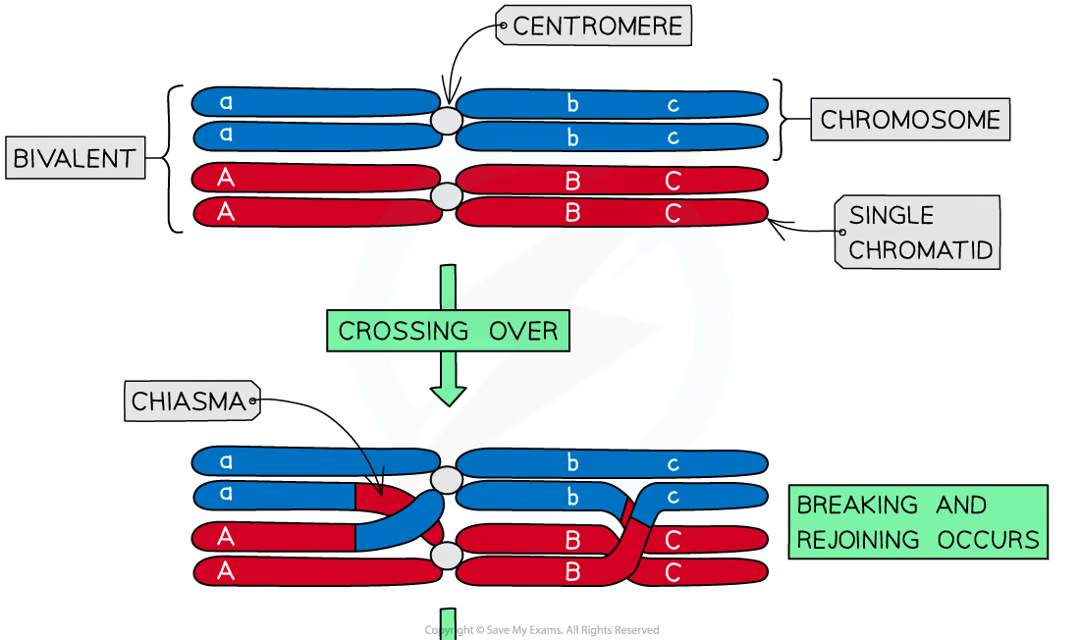
Why is crossing over significant?
This swapping of alleles is significant as it can result in a new combination of alleles on the two chromosomes
There is usually at least one chiasma present in each bivalent during meiosis but often there are multiple chiasmata
Crossing over is more likely to occur further down the chromosome away from the centromere
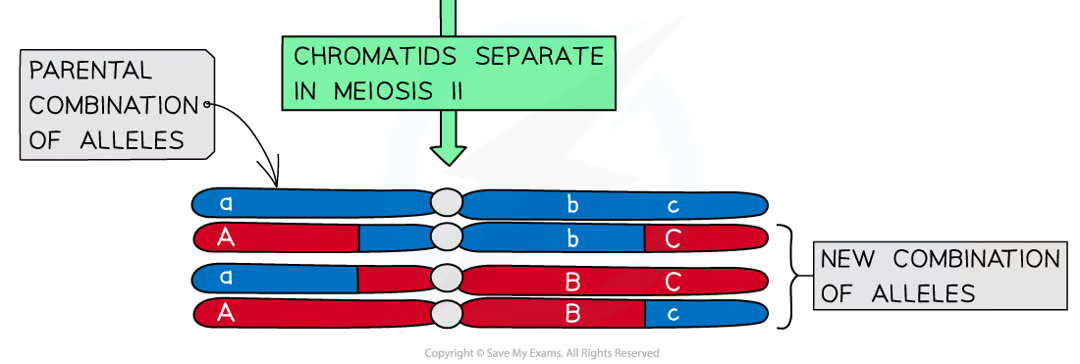
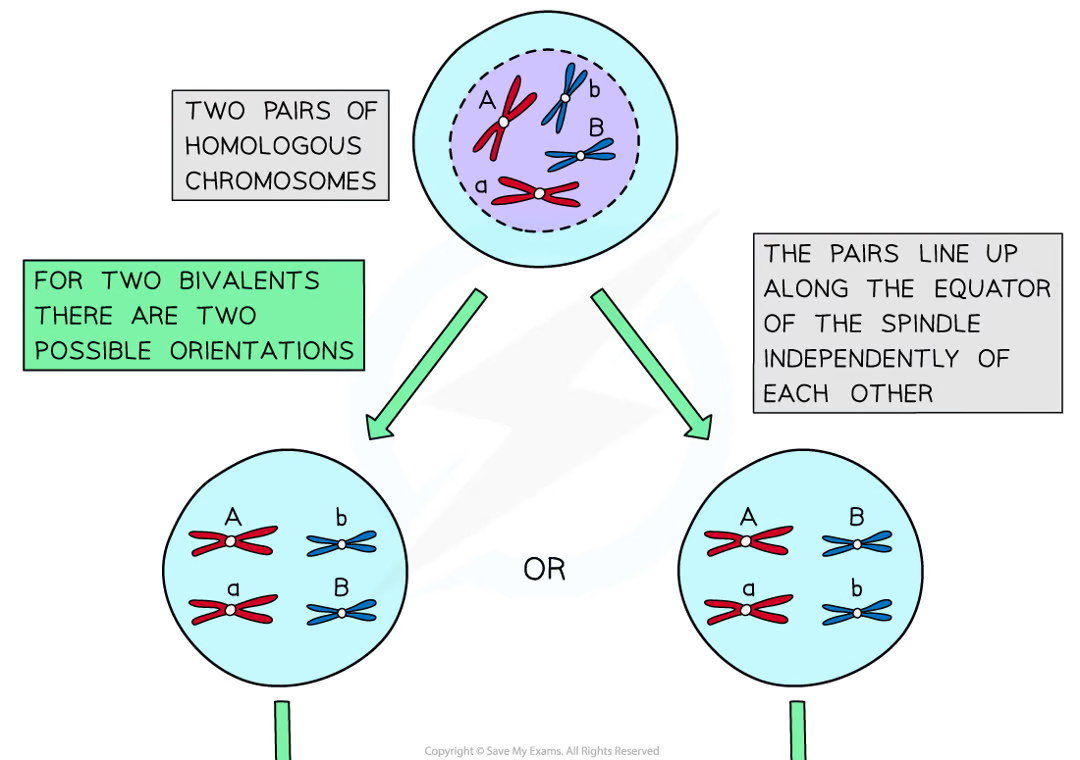
Independent assortment
Independent assortment is the production of different combinations of alleles in daughter cells due to the random alignment of homologous pairs along the equator of the spindle during metaphase I
The different combinations of chromosomes in daughter cells increases genetic variation between gametes
In prophase I homologous chromosomes pair up and in metaphase I they are pulled towards the equator of the spindle
Each pair can be arranged with either chromosome on top, this is completely random
The orientation of one homologous pair is independent / unaffected by the orientation of any other pair
The homologous chromosomes are then separated and pulled apart to different poles
The combination of alleles that end up in each daughter cell depends on how the pairs of homologous chromosomes were lined up
To work out the number of different possible chromosome combinations the formula 2n can be used, where n corresponds to the number of chromosomes in a haploid cell
For humans this is 223 which calculates as 8,324,608 different combinations
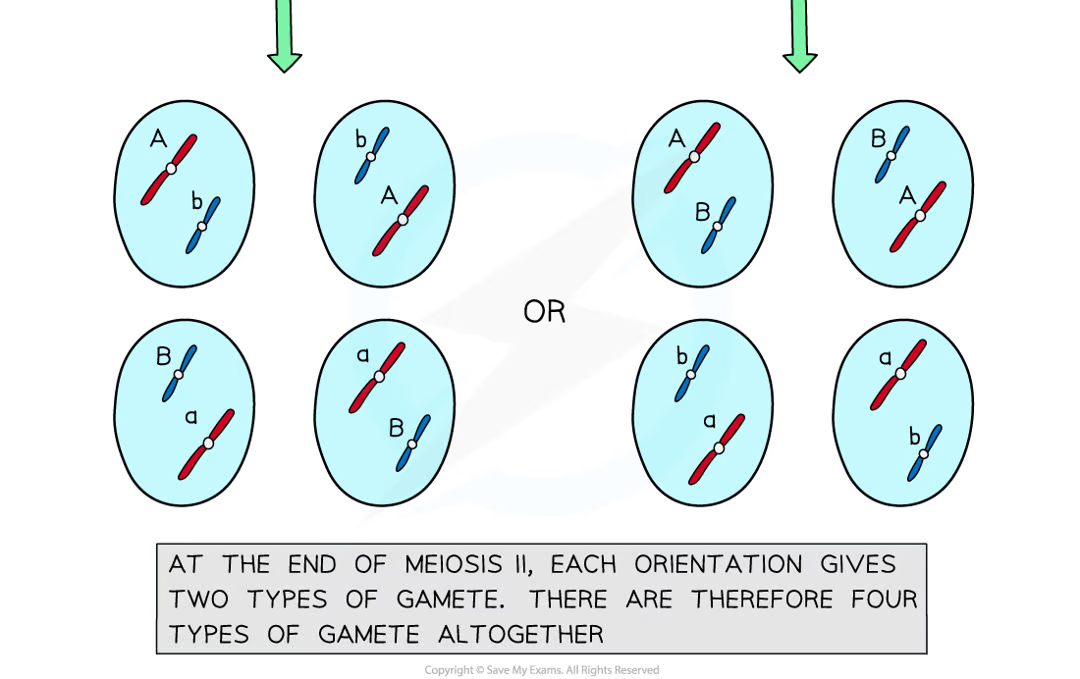
Random fertilisation of gametes
Meiosis creates genetic variation between the gametes produced by an individual through crossing over and independent assortment
This means each gamete carries substantially different alleles
During fertilization any male gamete can fuse with any female gamete to form a zygote
This random fusion of gametes at fertilization creates genetic variation between zygotes as each will have a unique combination of alleles
There is an almost zero chance of individual organisms resulting from successive sexual reproduction being genetically identical
Sources of genetic variation table
.
